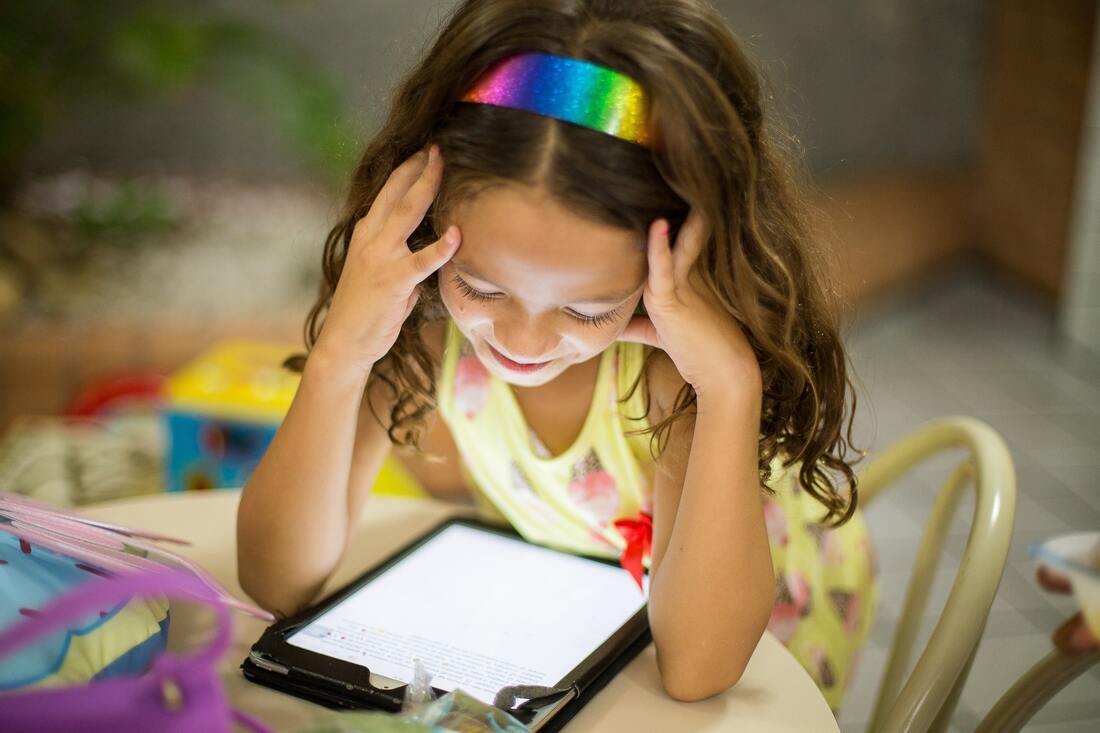|
As the Coronavirus pandemic grows, many in the mental health field are faced with the real possibility of some or all appointments needing to move to Telemental Health services. This hit home in my practice this week as I now have my first child clients going into a self imposed “social distancing”, which is a conscious effort to reduce close contact between people. Schools, sporting events, and large gatherings are being cancelled across the United States, even the training I was waiting all year to see. Ahhh! So many feelings are coming up for us as therapists and the families we serve. It hit home even further today as all schools will be closed in Minnesota effective Wednesday. There are many in the mental health community who serve young children who are feeling helpless and hopeless for how to develop a plan to move forward. For the younger children I see, I am primarily a Child Centered Play Therapist – so nondirective. Over the past weeks I have been faced with a choice of how to move forward as I radically accept the Coronavirus, its spread, and its impact on daily life. I have also been SO touched and moved with the way the Play Therapy community has come together to support one another, including the development of the “Tele-PLAY Therapy Resources and Support” facebook group. If we dive into the fears that some therapists may have about just what might happen during these appointments that hold therapists back, hopefully we can become clearer on the answers of how to move forward. At the beginning of my Telemental Health journey I began brainstorming what were the potential risks with children specifically. These were sessions where their parent or a guardian would be at the residence the entire duration of the session. Okay – so here is what my list looked like. What if they run out of the room? What if they turn off the camera/program? What if they take the device and go on other programs? What if they don’t listen to what I say? When I sat down to think about these things, I actually realized that I feel safer providing Telemental Health to children than adults. Children will always have an adult I can connect with if they are having difficulties. I developed a procedure to have parents accessible by phone for the duration of the appointment and I have easy access to their phone number and my phone. This means, if any of these things happened, a parent would quite quickly be able to engage in the room. I also reflected that some of these things happen within office too as part of the therapy process and most of us have a theory or procedures in place with how we handle clients not complying with limits or boundaries. Also, consider if limits may need to be set sooner to ensure the child stays in the window of tolerance to be able to engage with you. Lastly, brainstorm for your practice what will happen if they child is not able to comply with limits? Will the session be over? Will the parent join for the remainder of the session? Now, on to my next set of worries. What if they become distressed and begin to have a meltdown? What if they are throwing things or in physical danger? Again, I came back to quick and easy access for parents and extra safety precautions that I clearly review policies with parents that if there is a true crisis I will call 911 and will have their address easily accessible at all times. When I really thought about it hard, this would be no different than a child playing alone in their room for 30 or 40 minutes. AND what I know is that children get dysregulated at home all the darn time. How often do we hear about fights with siblings or a client completely melting down over losing a video game? Parents are present for those situations and have been the ones “in the trenches” responding to these episodes for the child’s entire life. You will want to have extra brainstorming and policies with parents around how they might handle this should it arise – which may look different for each client. Other potential difficulties I brainstormed was the child that did not want to engage in a virtual session – the child that left the room, had a tantrum when the appointment started, got bored and tuned you out - you get the picture. When I thought about it many children are familiar with a video chat platform like Facetime of Skype so this likely won’t be their first video chat. BUT I also know this could be very anxiety producing for children. I then considered what “buffet of options” I could provide to support families with. Would this be a child where parent and child sessions would be more beneficial? Would this be a client who I would meet with the parent only and potentially reduce session frequency? Would the child be receptive to certain activities over others? Then my mind wandered to age – what if they are too young? I then began thinking about what age would I ethically consider young enough to be unsupervised in a room for 30 minutes? Yes, as an adult I would be watching virtually what was happening in the room so they wouldn’t be truly alone, but I wouldn’t be able to physically intervene. My personal style is to check in together with parents and children, so 30 minutes is the minimum that I typically like to have with children alone. I also considered the emotional and maturity age and how this may be different with different clients. Another solution I thought was for children who may not be able to handle 30-40 minutes, could I alter sessions and do a 90832 session OR have sessions that were family focused with the parent in the room? Another idea I had was to have the parent physically present in the room, but not in the session. Maybe the parent has earphones in and are catching up on their favorite TV show? Lastly I came up with questions and worries about the technology. What if they don’t know how to work the program? Then I realized that most children are more proficient in technology than adults. I also know that a parent setting up the technology and being able to call the parent to assist should connection be lost and a re-set is needed would be something that would be a potential solution. As I sat down with all of this information and consulted the ACA Ethical Decision Making model I found nearly ALL of the foundational ethical principles applied. The first was Autonomy – providing my clients and their parents the right to make a choice about how they wanted to proceed with their mental health services. Next up – non-maleficence. How in this dilemma was I going to ensure that I was not causing harm to my clients? I weighed the pros and cons of no services (for weeks or months) OR an altered format (more directive, shorter appointments, etc.) via Telemental Health. How could I avoid client abandonment? Then comes beneficence – what will be the decision that will be in the best interest of the client? Again, I weighed the benefits of providing this service as a new format of therapy (virtual and directive) versus no services. Lastly is fidelity “honoring commitments and keeping promises, including fulfilling one’s responsibilities of trust in professional relationships.” How does this crisis fit with my commitment to clients? After considering these principles and weighing pros and cons of each, consulting my ethics code, state laws, board requirements, and insurance company requirements I decided the best course of action was to prepare to provide this service as an option and choice to families should they ask about it or be unable to engage in therapy due to circumstances such as quarantine. I decided I needed to continue to offer to provide mental health services as a consistent factor in their life as well as keep the connection and relationship in uncertian times. Interested in more about starting Telemental Health Services with children and adolescents? Take my free E-course HERE. It includes more comprehensive outline of Telemental Health services, a resource list, a “Cheat Sheet” to orient clients to Telmental Health and an informed consent template. Now, before we get into the good bits of what this might look like, I wanted to take some more time to talk about how we roll this out to our families. If I’m being really honest, how comfortable families feel with this therapy starts with US. If they inquire about it and we are anxious, frantic, or panicked OR we don’t even have a plan, families are definitely going to feel uneasy about getting their child’s mental health needs met in this way. I can tell you that it felt amazing to tell my clients this week “yes we can definitely set that up. Our clinic has been working on a plan to help support clients that need or would prefer to have virtual appointments. Here is a sheet that will help guide you though the login process and we can sign an additional informed consent and discuss the specific risks and limitations of Telemental Health”. These families – they were relieved that I had already been thinking about this and had measures in place to support the way they felt most comfortable having sessions. When I rolled this out to the young people I was working with it sounded a little like this “There are some really big things going on in our country right now. What do you think I am talking about? [prompting children to engage in their own language to describe the pandemic]. Yes! [paraphrase child’s response]. Now, I know your family is making some decisions with how to keep you and your family safe. What do you know about that? [prompt dialogue in the child’s own language about the changes]. Yes! [paraphrase child’s response]. There may be a lot of changes in your life because of this like not getting to see your friends for a bit or go to the activities you like, but the good news is we will still get to meet virtually! Have you ever had a time that you talked to someone over video on the phone or the computer? [prompt a dialogue about their experiences with video chatting platforms]. Now for us, our sessions might look a little bit different. I know most of the time you get to be in charge in here and decide what to do. When we meet virtually I will have an activity or project set up for us and will let your parents know exactly what you need to have for our time together. Now, what questions do you have? [prompt discussion about fears, worries, or wonders].” Lastly some tips of how to prepare and orient these sessions. The most frequent question I have is how to keep the sessions private. Brainstorm with parents what room of the house is the most beneficial for privacy and utility. Discuss the option of playing a radio outside of the room for extra confidentiality, especially if siblings will be home. Discuss how parents can ensure that siblings maintain good boundaries. Have them practice before hand of where to place the device. Email parents a “supply list” of what they need to have on hand for the sessions before the session. Evaluate the need for an altered structure. I usually say a casual goodbye to parents in the lobby as we transition but evaluate if there may be a need for the parent to come on camera and officially end the session. Oh and lastly – I made a commitment to my clients that I would tally how many virtual sessions we had together and they would get to pick that many treasures from my treasure box when we resumed in person sessions. I definitely didn’t think it was fair to withhold the treasure! Okay – now to the activities! I actually had so much fun putting this together and the ideas just kept flowing! I created this list with the minimum amount of supplies necessary that all families likely have on hand at home! 20 Free, Low Prep, and Minimal Supply Activities for Telmental Health With Children:
Here are some additional things to consider – all online programs you are asking clients to use should have informed consent from a parent and clear communication about why you would like the child to access such a program. You should never engage in the chat feature of any online shared program (if applicable) as it is not HIPAA compliant. Lastly – if there are no markers, colored pencils, or crayons to be found in the home you can have the child draw different patterns to symbolize different aspects and create a “key” of sorts to code it all out. I hope this gets your wheels turning about free and low prep activities that you could modify to work well with Telemental Health child clients! We are creative. We are play therapists. WE CAN DO THIS! Interested in more training? Check out my Cognitive Behavioral Play: Low Cost and Preparation Training for Telemedicine and Tele-Play that is approved for 3.25 APT Non-Contact hours by Meehan Mental Health Services (APT Approved Provider 19-580). Drop a comment with your favorite free, low cost, low prep activities that you are thinking about using for Telemental Health with kids! Let's Connect - click here to join my email list!
27 Comments
Shelley
3/15/2020 05:11:32 pm
Thankyou! Over the last few years, I have tinkered with the idea of Tele-Play therapy as an added service for my child/teen private practice but had trouble with these exact questions. I love how thoroughly you considered your hesitations through the lens of the ACA ethical decision making model. And your brainstorm of play therapy activities for use online is very generous. You’ve sparked my creative juices again for online play therapy. You’re right. We CAN do this! Thankyou!
Reply
Brianna
8/31/2020 10:16:02 am
Thank you for sharing these! As an intern I struggle with telehealth with the children I see. I'm excited to use these!!!
Reply
Cathy Figgins
3/15/2020 08:13:30 pm
Love all
Reply
Minnie
3/16/2020 10:54:27 pm
Your ideas feel so relevant and valuable at this time in the world. I have deep appreciation for your contributions. Thank you.
Reply
Carrie
3/17/2020 08:42:30 am
Thanks so much! As a school-based counselor, I never thought I would have to consider how to provide therapy online, but here we are! This is so helpful! I also signed up the for the course. Thanks so much!
Reply
Theresa
3/19/2020 01:45:18 pm
Fabulous ideas! I was nervous about doing counseling online, but these great ideas have me excited about it now. Thanks so much for sharing!
Reply
Deborah
3/22/2020 02:40:25 pm
Thank you - not just for this inspiring, creative & practical list - but also for your lovely energy! What a gift you must be for your clients - and (as it now is) for mine.
Reply
Rebecca Levin
3/25/2020 06:26:39 pm
Thank you!
Reply
Abby
4/7/2020 07:10:40 am
Thank you so much- I am a counselor and will be using a lot of these ideas. So appreciate you posting this- such good ideas!
Reply
Alison
4/7/2020 03:04:36 pm
Thank you - what a great (& timely) resource! I was recently thrust into the role of providing telemental health. This is so comprehensive & well-organized!
Reply
Traci
4/10/2020 02:03:06 pm
Thank you so much for these amazing tips, reminders, and suggested activities. Yes, we CAN do this.
Reply
Julia
4/14/2020 12:54:00 pm
Thank you so much! I feel so much better already. Appreciate you and the time and energy you took to get this together. I'm excited for my sessions this week!
Reply
Nina
5/1/2020 03:37:42 pm
Thank you for this! I usually spend time scouring the web for ideas that are actually able to be implemented, and this entire list was easy to find and extremely useful. I never leave comments, I just had to express my gratitude for your thoughtful list.
Reply
Pat
5/4/2020 11:45:56 am
THANK YOU! Wonderful ideas. Very generous of you to share with the world. Speaks to your character! I will sign up for that course!
Reply
Jordan
5/18/2020 05:14:17 pm
Another great resource I have been using with my clients is tabletopia.com! You can make a free account and play various board and card games virtually. Virtual chess has been a big hit, and leaves plenty of time for processing in between turns.
Reply
Ann Meehan
5/20/2020 05:23:44 pm
Thanks Jordan for this great resource!
Reply
Shaune
5/20/2020 05:52:13 pm
Thank you so much for these GREAT and helpful ideas!
Reply
I'd LOVE a list of the problems - What if they run out of the room? What if they turn off the camera/program? What if they take the device and go on other programs? What if they don’t listen to what I say? - that you came with. Do you have a list of what you can do? Yesterday, I told a child that she could go to the bathroom and then I thought, uh oh, is she going to come back? No ADHD; she came back ;-). Do you have a parent letter than discusses these things - like, the rules for parents?
Reply
Ann Meehan
6/4/2020 04:49:29 am
Hi Ashley - what GREAT questions. Watch in the next couple of weeks for a blog post about troubleshooting! In the blog below I do cover a "cheat sheet" of sorts for parents so you might want to check that out!
Reply
Sara
6/29/2020 06:17:32 pm
I also love the "worry string activity" have a child describe something that is worrying them and let them direct you to pull out of piece of string that is as big as the worry. Then come up with ideas of how we can make the string shorter (e.g. coping skills, talking to an adult, using positive self-talk). Helps kids with anxiety to have a tangible/visual representation of how to work through the problem.
Reply
Ann Meehan
6/30/2020 04:20:11 am
YES!! Thanks for sharing Sara! I have used this one as well and it can be SO powerful for young people!
Reply
7/8/2020 09:04:36 am
I already commented
Reply
Ann Meehan
7/8/2020 11:53:54 am
Hi! There are definitely a ton of activities in the blog above for Telehealth and children! If you are looking for a training the link below is a training with APT credit for CBPT Teleplay Activities. There are also many other articles on the blog that can give you ideas for tele-play activities. If you have more of a specific question you can email me at [email protected]
Reply
1/19/2021 03:52:04 pm
I like how you said that how comfortable families feel with therapy starts with the therapist. Their example will show people if they can open up or not. Some therapies probably don't work because the therapist didn't fit well with the patient.
Reply
1/28/2021 10:26:21 am
Thanks for mentioning how you felt more safe providing Telmental Health to children than adults. My child has been sick for the past few months. I'll speak with a medical professional to determine if Telemental Health is right for my child.
Reply
2/7/2024 05:31:00 pm
Thank you so much for these TeleHealth resources. I appreciate you!
Reply
Leave a Reply. |
Hi, there!I'm Ann Meehan, an LPCC, Loading... Archives
July 2024
Categories
All
|
Privacy Policies | Terms of Use | Disclaimer
Contact
[email protected] | Copyright Meehan Mental Health Services 2022
Contact
[email protected] | Copyright Meehan Mental Health Services 2022





